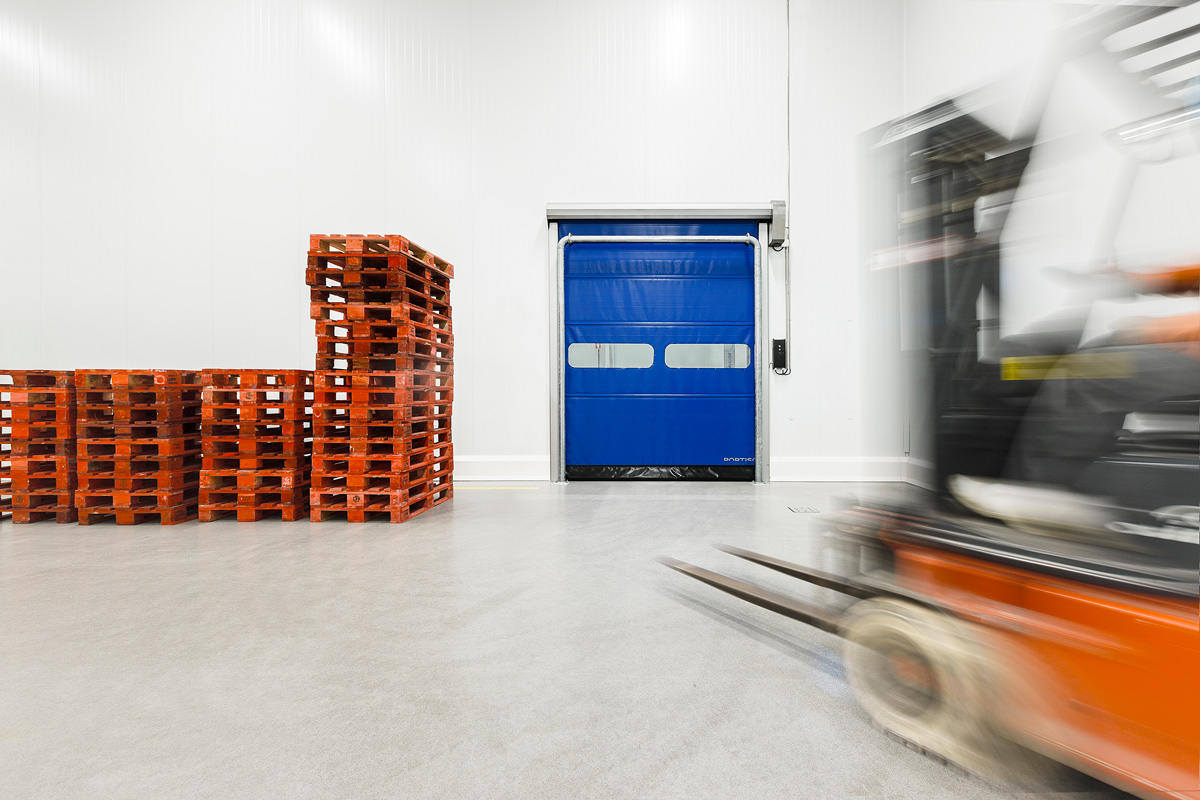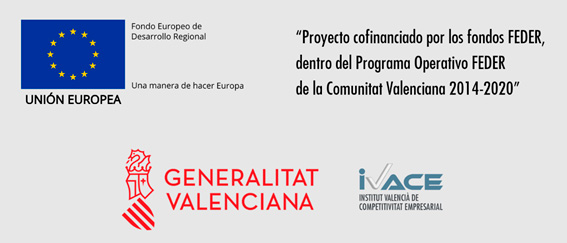We want to tell you which are the characteristics that guarantee that the canvas of the high-speed door meets the fundamental requirements we expect from it: resistance to wear and friction, impermeability, insulation, aesthetics, to withstand in perfect condition over time…
It is thought that the structure of the door is the most important element of it, but what will distinguish one door from another with the use and the passage of time is the canvas, it will be our image to the customer. For this reason, the material to be used must be carefully selected, taking into account the door model, its operation, the place where it will be installed, the temperature it will withstand, the air pressure…
Perhaps you are already clear about the fundamental aspects, if you have been in this sector for as long as we have, but in case you are still not quite sure or want to know more, we will tell you about it.
What material do we use?
The tarpaulins that exist in most of the market are made of polyvinyl chloride, commonly known as PVC, and are usually lacquered on both sides of the tarpaulin, which gives it some of the advantages that we will tell you later.
In our case, we decided to manufacture them in PVC with Nylon interlaced, since this material provides greater and good properties that will add to the advantages that PVC alone already has.
What are the advantages of pvc tarpaulins?
There are many qualities that have the pvc tarpaulins, we show you the most important ones that we consider and that must have any tarpaulin of a fast door.
- Waterproofing: they guarantee minimum water absorption and protection against gases and liquids. This is very important because tarpaulins are usually exposed to water or liquids for cleaning, and if they are used outdoors, to rain.
- Treatment against UV radiation, ultraviolet rays can greatly affect materials that are used outdoors and exposed to the elements. They shall not show changes in appearance, such as yellowing, surface discoloration or cracking. Neither will they suffer changes in their mechanical properties, such as increased brittleness, decreased strength, elasticity and hardness, or the appearance of stress cracks.
- Treatment that prevents the ignition of materials and reduces the spread of flames. They become effective during the ignition phase of a fire, as they slow down or prevent those processes that can lead to a fully developed fire: namely, the heating of flammable material, its thermal decomposition, the ignition of flammable decomposition products and the spread of flames.
- Antistatic: they prevent the formation of static electricity, which is very important especially in such a delicate environment as clean rooms.
- Insulation: they offer thermal, wind and acoustic insulation, protecting from dust, noise and all external agents that could cause damage.
- Elastic recovery: flexible and elastic, it has a great capacity to recover from deformation, so it withstands continuous winding very well and its aesthetics are not affected.
- Highly resistant: high resistance to abrasion, friction and traction, essential to ensure the durability of the tarpaulin and extend its service life.
- Ease of welding: one of its great advantages is that it allows us to work the canvas in the best possible way, since heat welding offers much greater resistance, since the thermoplastic melts and recovers its original properties.
- Customizable: this type of material can be printed or stamped with your company logo, an image, etc., thus customizing it to the taste and needs of each client.
- Recyclable: a very important point nowadays, since it is important not to waste resources as much as possible. And this is because, even if it suffers damage or time passes, it is a material that does not rot. It will also result in some cost savings.
Will any weight of tarpaulin work for us?
The grammage is the weight in grams of a square meter of material surface, the more weight the canvas has per square meter, the higher the grammage will be and the more resistant it will be.
The weight of the canvas is essential if the high-speed door is to work intensively without quickly deteriorating, tearing or breaking. This will vary depending on the use of the door and the thickness of the canvas, thus adapting it so that it always has the minimum resistance required to ensure proper operation of each door model.
However, we recommend never install doors whose canvas weight is less than 950 gr/m2, because, although we may think that we save a significant amount of money at the time of purchase, the rapid deterioration that the canvas will suffer will not compensate for the initial cost savings and we will also give a very negative image to the end customer.
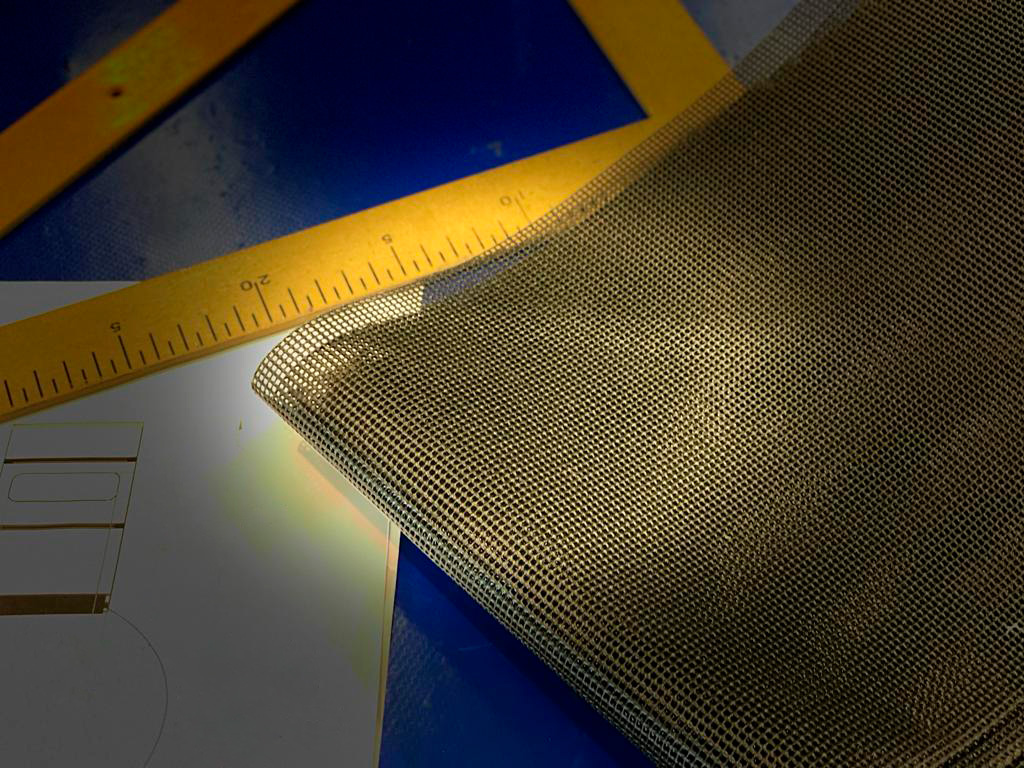
Did you know that in addition to the above, the grammage directly affects the wind resistance of the door and its aesthetics?
Indeed, if we use a canvas with a very low grammage (less than 950 gr/m2), the wind resistance of the door will decrease considerably and we will also see how quickly wrinkles and water marks will appear and will not go away. This is especially important in the case of self-inserting doors or cold rooms, which is why we always use heavier weights.
And what is the most suitable tarpaulin thickness?
There are different thicknesses of tarpaulin and to make the right choice we must always take into account different factors:
- Characteristics and operation of the door.
- Temperature where the doors are installed, it is very important to take into account both the inside and outside temperature. A large thermal jump will condition the thickness of the tarpaulin chosen, even if we are in an area with a positive temperature.
- Existing humidity conditions in the installation.
However, if we want our customer to have a quality door, we should never install doors whose canvas thickness is less than 1 mm.
And when we put our doors in positive or negative cold rooms we will always use isothermal tarpaulins of a thickness much greater than the standard.
In any case, beyond the thickness of the canvas, if we want to guarantee a higher degree of insulation, we must pay attention to another fundamental aspect, the insulation in the lintel and the door guides. It is useless to put a very thick canvas, if we then lose the temperature from above or the sides, think of a refrigerated door, not only counts the thickness of the sheet, it is essential some weatherstripping to ensure that the temperature loss is reduced to the maximum.
What finishing options do we have?
We have many options for our tarpaulins, among which we highlight the range of colors available, the possibilities of whether or not they have a peephole and the customization options they allow. Let’s see them!
Can they always wear a peephole?
The peepholes are one of the signs of identity of the fast doors, since they allow us to see what is on the other side, so they help to speed up the passage of vehicles or people. In addition, they allow more light into the rooms where they are present and contribute to create a more pleasant working environment.
The peephole is also a point that makes the difference in quality between one door and another, a peephole must have a perfect finish, be well welded and the translucent pvc used for it must be of high quality.
Multiple peephole configurations can be made, even completely translucent doors (except for the parts with the highest friction, because if they are made translucent, even if they are very beautiful, they deteriorate very quickly).
However, there are situations where it is not advisable to put a peephole, all those where there is an important thermal jump, low temperatures, high humidity … in the case of putting them we will find that the canvas will condense at that point and also its thickness will be less than the rest of the canvas being a point of loss of cold.
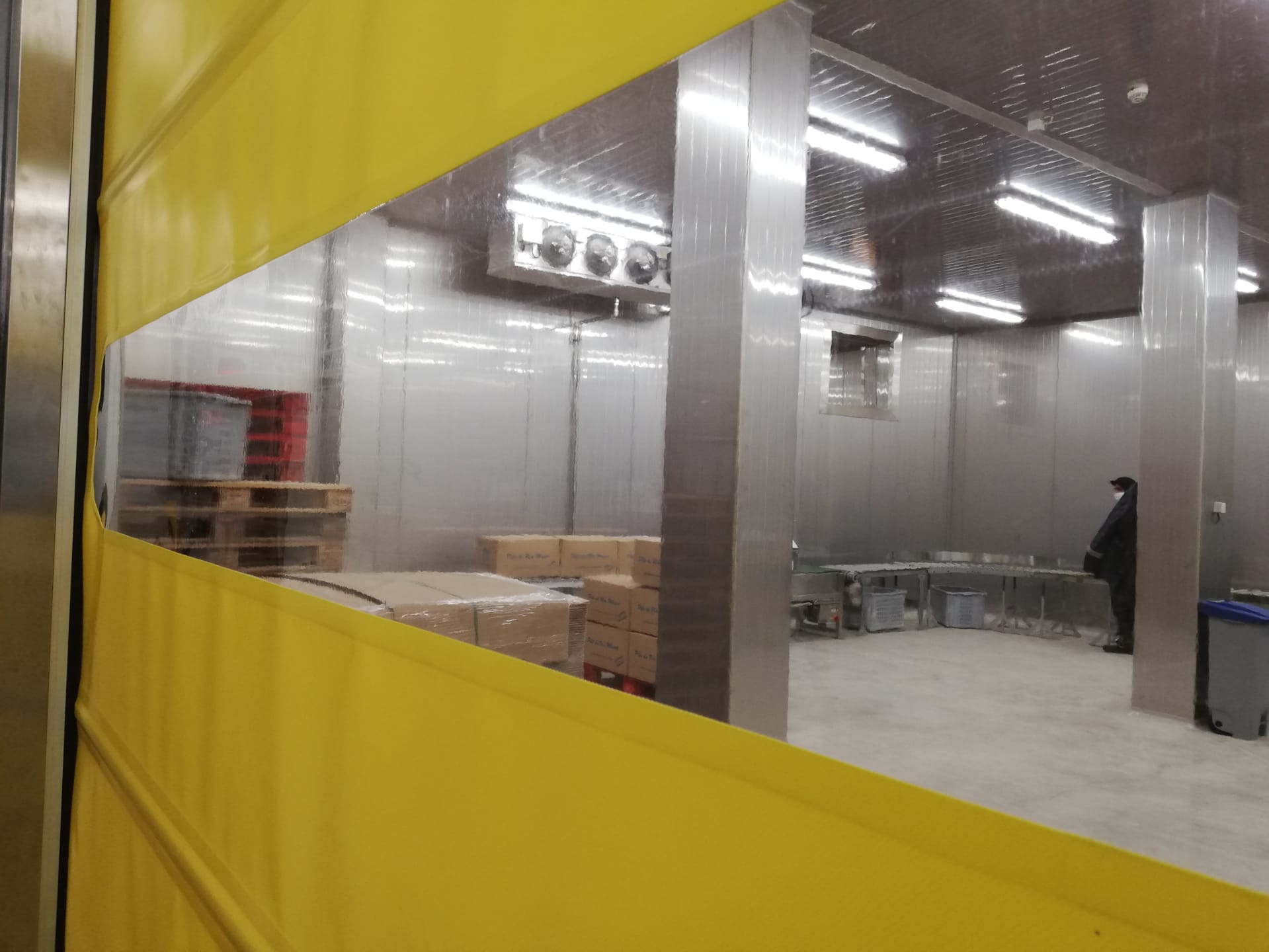
What colors of canvas can be chosen?
As we have already mentioned, pvc tarpaulins are lacquered on both sides, the range of colors is very wide, so that a door can be manufactured in any color, provided that the tarpaulin meets the minimum standards of weight and thickness.
do you know how to identify a color?
In order to make it easier for the customer to choose a specific color or to know which color tone corresponds to his needs, we usually work with a ral color chart, although it must always be taken into account that the color varies according to the material used.
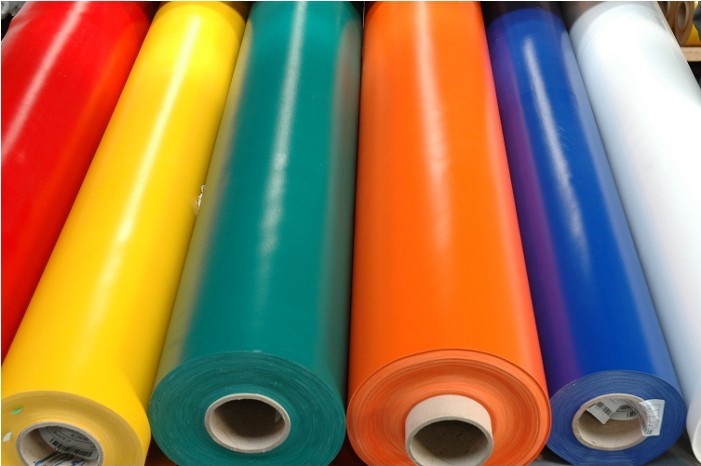
In our case, we have chosen to have a wide range of colors in stock, in order to provide a fast and efficient service to our customers, which allows us to give our customers very short manufacturing lead times.
Can they be customized?
One of the main advantages offered by the canvas material we use is the possibility to fully customize them to the taste and needs of our customers.
Usually, the tarpaulin carries the manufacturer’s logo, so that any customer or user of the door can see at a glance the door brand and the tarpaulin becomes the clearest element to identify the door manufacturer. However, this logo does not necessarily have to be on the canvas, the door can be served without any logo or with the logo of the end customer, customizing it and giving it a touch of exclusivity.
In addition, it is possible to print a photo or image on the canvas, thanks to the quality and characteristics of the PVC we use, the finish is perfect and the door serves to add value to the installation. This type of finish is widely used in supermarkets, where each door is used to display an image of the main products offered or of the area where they are installed: meat, fish, bread, dairy products, fruits, vegetables…
Likewise, they can be used to put a message to customers, thus serving to promote certain products or services, for example, the website or online shopping.
Is it easy to clean?
With all that we have told you so far, there was one advantage to highlight, and that is that they are hygienic, which is why they can be found in food handling facilities.
Neutral products that do not contain alcohol, or a very low percentage of alcohol, should be used for cleaning. And above all avoid the use of products with alkaline or very acidic agents, and even less solvent products.
These products should be used together with sponges, rags or soft bristle brushes, and should be rubbed and cleaned manually, or with machines that can spray water at low pressure. Under no circumstances should aggressive methods such as abrasive or hard bristle brushes or pressurized water jets be used.
By following these steps, your tarpaulin will not lose and will keep all its properties, characteristics and therefore its advantages.
Do you still have doubts about your choice? Do you want to know more about this product?
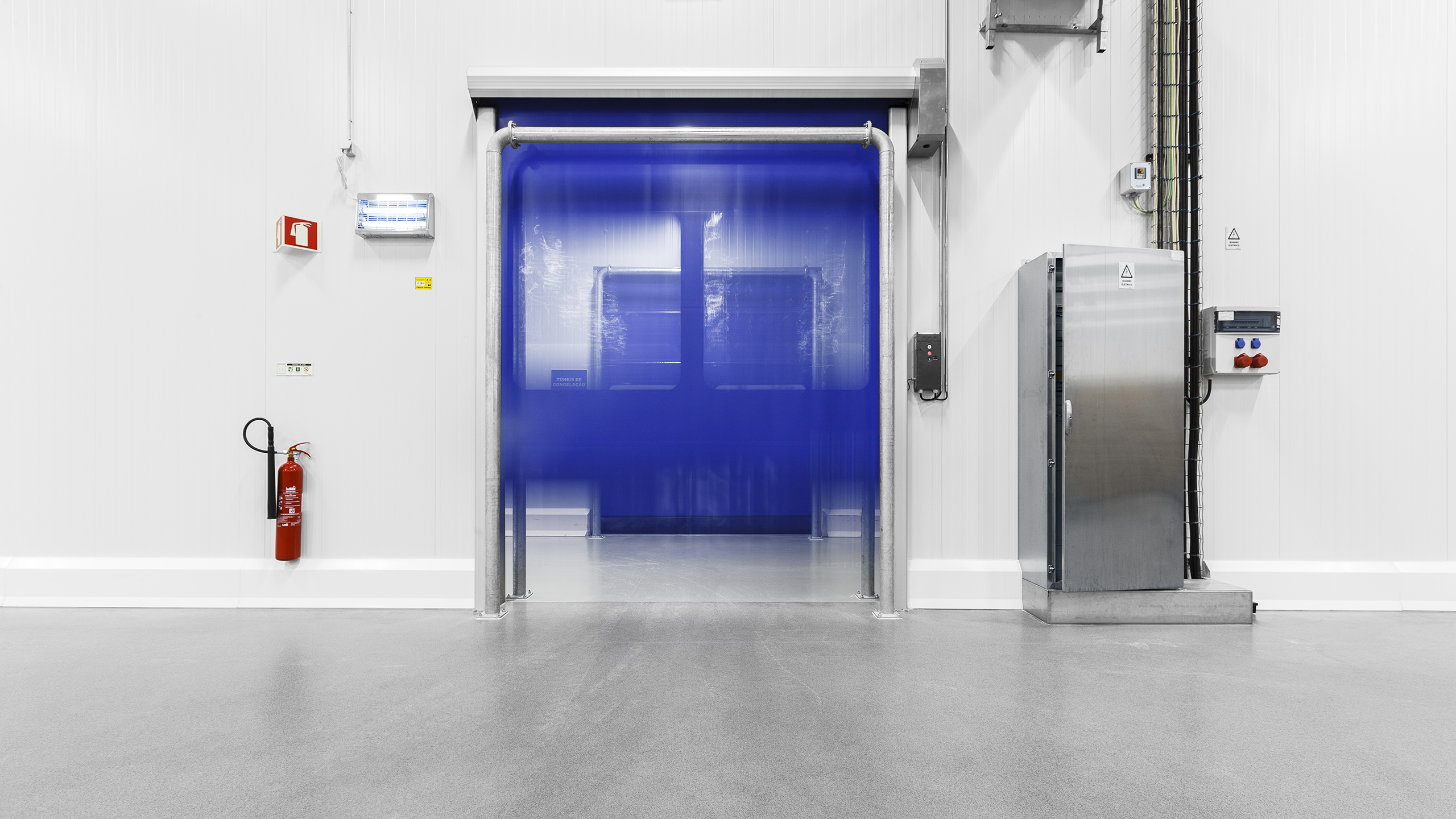
ABH Self-Inserting High Speed Door
